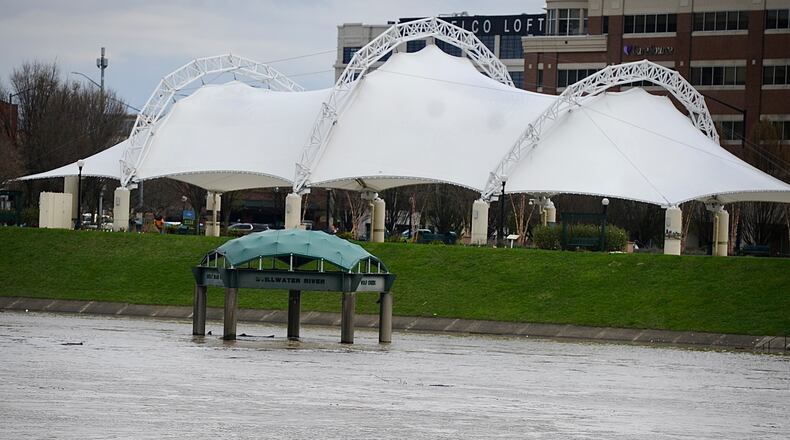“It’s a good chunk of rain, but not unheard of,” he said. “On average, we don’t get this much in a week in the spring, but it’s not surprising in Ohio for this time of year.”
Sarah Hippensteel Hall, the Miami Conservancy District’s manager of communications, outreach and stewardship, said all five of the district’s dry dams stored some water last week. She said peak storage by the five Miami Conservancy District flood protection dams was 28,040 acre-feet or about 9.1 billion gallons of water.
“This ranks 74th on the list of largest storage events for the system,” she said. “It was nothing that we weren’t ready for.”
MCD’s flood protection system of five dams and storage basins, along with 55 miles of levee, has protected cities along the Great Miami River since the system was completed in 1922, according to its website.
Unlike dams that continuously hold back water either for recreation or power generation, MCD’s dams are “dry dams,” with no permanent pool or reservoir behind them. The land behind MCD dams is normally dry and only stores floodwater after heavy or prolonged rains, according to its website.
Hall said the Lockington Dam in Shelby County crested at 26.7 feet, which ranks 24th out of the 433 storage events at that dam. She said the Taylorsville Dam — just north of I-70 on the Huber Heights/Vandalia line — held water at 23.1 feet, which ranks 24th out of 207 storage events at that dam.
“This is the sixth time this year our dams or levees stored water — and the first time all dams stored water for 2024,” she said.
Hall said the dams and levees operate without human intervention and have no moving parts, except floodgates on storm sewers along the levees. She said MCD also closed floodgates in Piqua, Troy, Dayton, West Carrollton, Miamisburg, Franklin, Middletown, and Hamilton, during the recent heavy rainfall.
MCD has identified about $150 million in various improvements to the system to be done in phases over the next several decades, Hall said. Assessments paid by property owners along the river are expected to rise. Public meetings about that process are ongoing this month.
Hall said the district is working to improve the integrated flood protection so communities stay safe along the Great Miami River. Without the improvements, there is an increased risk of failure and threat from catastrophic flooding, she said.
“We’re making sure it lasts another 100 years,” Hall said.
Credit: MIAMI CONSERVANCY DISTRICT
Credit: MIAMI CONSERVANCY DISTRICT
About the Author



